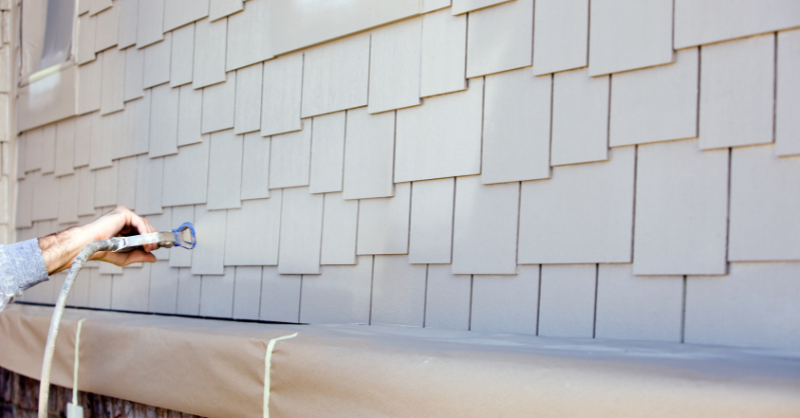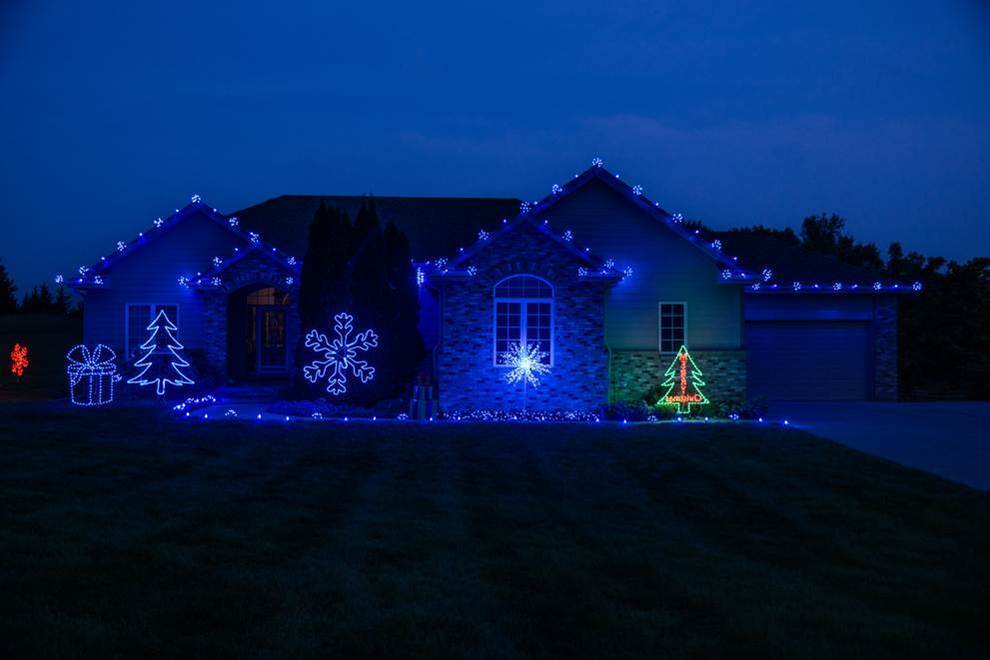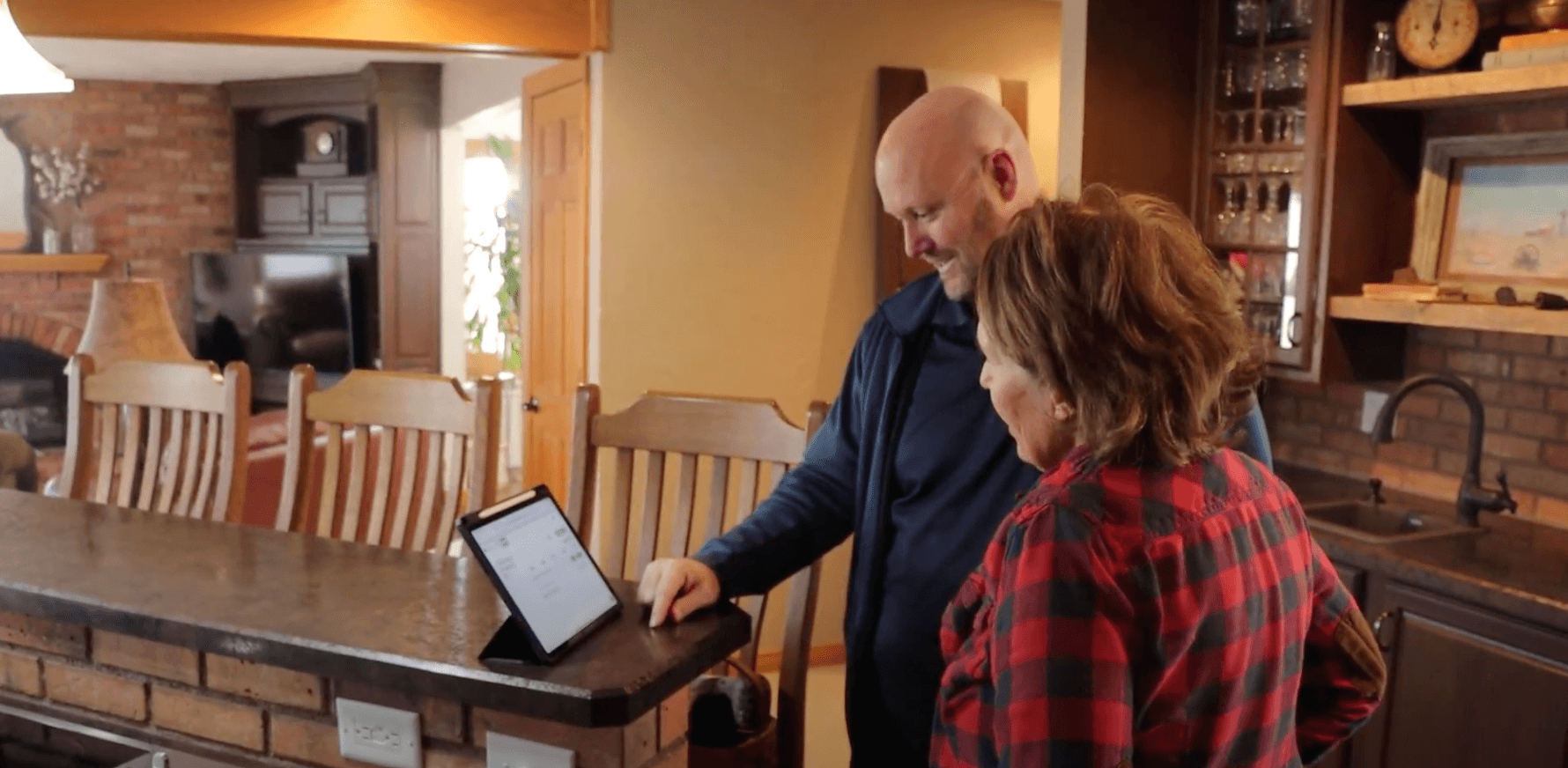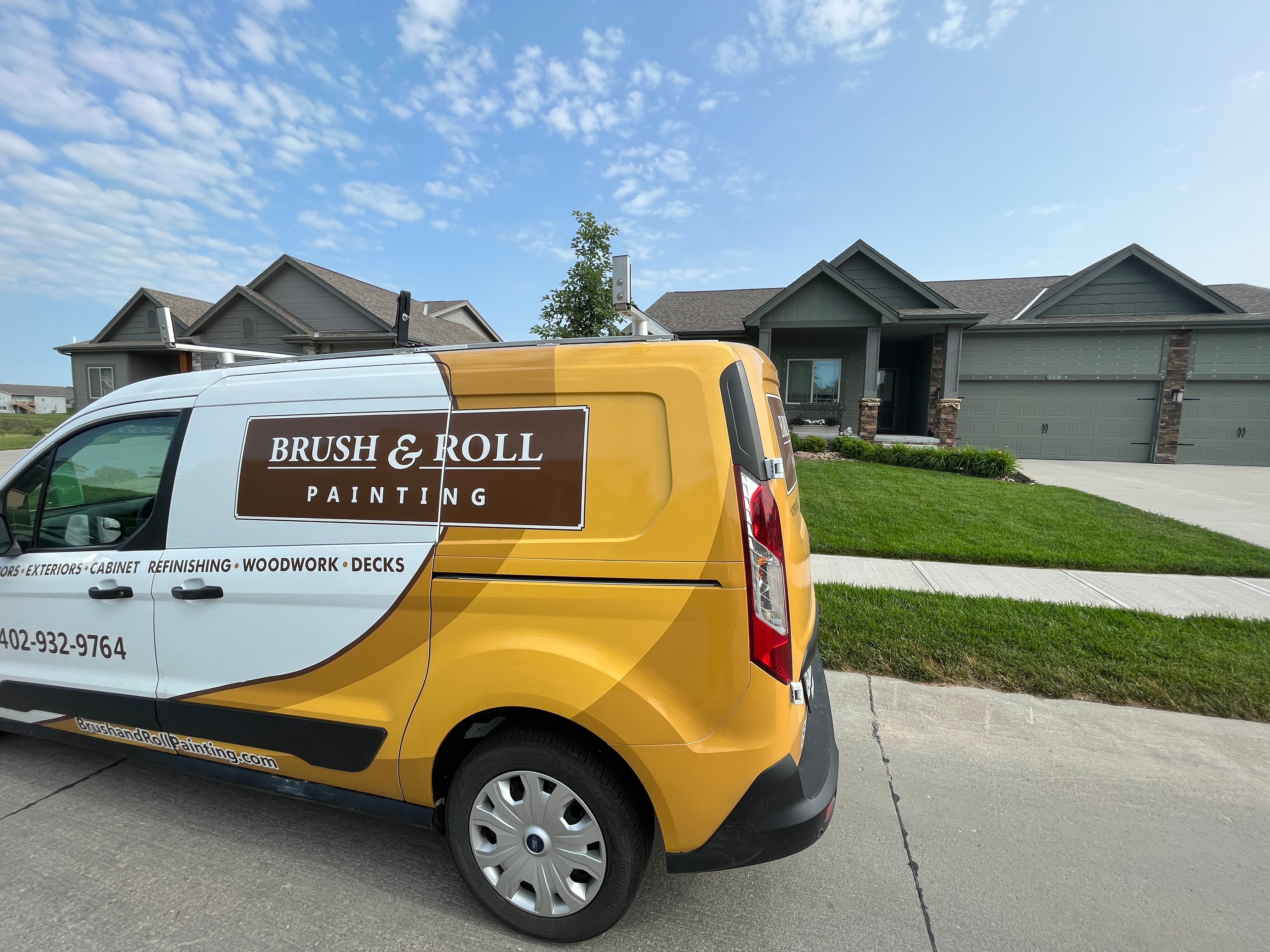How Long Does Exterior Paint Take to Dry?
June 29th, 2024
4 min read

While investing in a project as large as exterior painting, it’s crucial that the proper steps are taken to ensure it looks flawless and lasts. It’s important that exterior paint fully dries and cures, or it could cause some issues.
At Brush & Roll Painting, we’ve spent nearly 30 years helping homeowners in Omaha achieve stunning and durable paint jobs. We understand the unique challenges posed by the local climate and have the expertise to ensure your exterior paint dries correctly and stands the test of time. Our knowledge and experience allow us to guide you through the painting process, ensuring a smooth and successful project.
In this article, we’ll cover everything you need to know about the drying time of exterior paint. You’ll learn why proper drying is so important, the common issues that arise when paint doesn’t dry correctly, how to determine the appropriate drying time for your project, and the factors that influence drying times. By the end, you’ll have the knowledge to avoid mistakes, whether you hire a painter or are doing the project yourself, and ensure a flawless finish for your home’s exterior.
Importance of Exterior Paint Dry Time
When it comes to painting the exterior of your home, patience truly is a virtue. Proper drying time is essential for several reasons:
- Durability: Paint that doesn’t dry properly is more likely to quickly peel, crack, or blister. This is not only bad but also exposes your home to the elements, potentially leading to damage and expensive repairs.
- Aesthetic Appeal: Properly dried paint ensures a smooth, even finish. Rushing the drying process can result in streaks, smudges, or an uneven surface that detracts from your home’s curb appeal.
- Protection: Exterior paint acts as a protective barrier against moisture, UV rays, and other environmental factors. If the paint doesn’t dry and cure on the surface correctly, it can’t provide this essential protection, leaving your home vulnerable.
- Longevity: A well-dried paint job lasts longer, saving you time and money in the long run. Proper drying helps the paint adhere better and withstand the rigors of changing weather conditions.
Problems When Exterior Paint Doesn’t Dry Correctly

When exterior paint isn’t given enough time to dry, a range of problems can occur:
- Peeling and Flaking: One of the most common issues is peeling and flaking. This happens when the paint doesn’t adhere properly to the surface, often due to moisture getting trapped underneath.
- Blistering: Blistering occurs when bubbles form under the paint surface, usually because the paint dried too quickly or because it was applied in high humidity or direct sunlight.
- Cracking: Cracking can occur if the paint layer is too thick or if the drying conditions are not ideal. This can lead to a rough, unattractive finish.
- Discoloration: If the paint doesn’t dry evenly, it can lead to discoloration, with some areas appearing darker or lighter than others.
How Do You Know How Long Exterior Paint Takes to Dry?
Understanding how long exterior paint takes to dry involves considering several factors:
1. Type of Paint: Different types of paint have different drying times. For example, latex paint generally dries faster than oil-based paint. Latex paint might be dry to the touch within 1-2 hours but needs about 4-6 hours before you can apply a second coat. Oil-based paint, on the other hand, may take 6-8 hours to dry to the touch and 24 hours before re-coating.
All painters should check the technical data sheets for the paint product. This will give them the recommended amounts from the manufacturer.
2. Weather Conditions: Temperature, humidity, and wind all affect drying time. Ideal conditions for drying are warm temperatures (between 50-85°F), low humidity, and good air circulation. High humidity and low temperatures can significantly slow down the drying process.
3. Surface Type: The material of the surface being painted also impacts drying time. Porous surfaces like wood can absorb paint more quickly, while non-porous surfaces like metal or previously painted surfaces might take a little longer to dry.
4. Thickness of Application: Thicker layers of paint take longer to dry. Applying multiple thin coats rather than one thick coat at the proper mil thickness can help ensure even drying and a smoother finish.
5. Sunlight and Shade: Direct sunlight can cause paint to dry too quickly, leading to issues like blistering. Painting in the shade or during times of the day when the sun isn’t directly hitting the surface can help.
Factors Impacting Exterior Paint Drying Time
 Several factors can influence how long it takes for exterior paint to dry:
Several factors can influence how long it takes for exterior paint to dry:
- Temperature: Cooler temperatures slow down the drying process, while warmer temperatures speed it up. However, extremely high temperatures can cause the paint to dry too quickly, resulting in a less durable finish.
- Humidity: High humidity levels can prevent paint from drying properly, as the moisture in the air interferes with the paint’s ability to set. Low humidity is ideal for faster drying times.
- Wind: A gentle breeze can help paint dry faster by increasing air circulation. However, strong winds can cause dust and debris to stick to the wet paint, leading to an uneven finish.
- Rain: It’s crucial to avoid painting when rain is expected. Even if the paint appears dry to the touch, rain can wash it away or cause it to streak.
- Surface Preparation: Properly preparing the surface before painting is essential for good adhesion and drying. This includes cleaning the surface, sanding rough spots, and applying a primer if necessary.
Tips for Ensuring Proper Exterior Paint Dry Time
To ensure your exterior paint dries correctly and provides a long-lasting finish, consider these tips:
- Check the Weather Forecast: Plan your painting project for a period of stable, dry weather. Avoid painting when rain or extreme temperature changes are expected.
- Use Quality Paint: High-quality paints are formulated to dry properly and provide better coverage and durability. Investing in good paint can save you time and money in the long run.
- Apply The Right Mil Thickness: Mil thickness is the measurement of the thickness of a coat of paint on a surface. Manufacturers of paint products do have recommended amounts that their paint should be applied to get the best results.
- Avoid Painting in Direct Sunlight: If possible, paint in the shade or during cooler parts of the day to prevent the paint from drying too quickly.
- Ventilation: Ensure good air circulation around the painted surface. This can be achieved by painting on days with a light breeze or using fans to circulate air.
- Follow Manufacturer’s Instructions: Always follow the drying time recommendations provided by the paint manufacturer. These guidelines are based on extensive testing and will help ensure the best results.
Your Exterior Paint Dry Time
Ensuring your exterior paint dries properly is crucial for achieving a beautiful, durable finish that protects your home and enhances its curb appeal. By understanding the factors that influence drying time and taking the necessary steps to allow for proper drying, you can avoid common mistakes and enjoy the exterior of your home that you love.
At Brush & Roll Painting, we’re dedicated to helping homeowners in Omaha make informed decisions about their exterior painting projects. Click the button below to get a quote for your exterior painting project.
Even when hiring a painter to paint the exterior of your home, it’s important that you are confident throughout the entire process, so you don’t make any costly mistakes. Next, download your exterior painting project checklist, so you can mark off each step of the process and get one step closer to your lasting, exterior painting project.
Kaylea is the Brush & Roll Painting Content Manager. Kaylea is a Journalism and Media Communications summa cum laude graduate with a minor in Marketing from the University of Nebraska at Omaha. Kaylea manages the marketing for Brush & Roll Painting.



















-Jul-23-2025-02-21-33-5468-PM.png?width=800&height=418&name=Blog%20Post%20Image%20Size%20(2)-Jul-23-2025-02-21-33-5468-PM.png)




-Oct-22-2025-01-39-19-5208-PM.png?width=800&height=418&name=Blog%20Post%20Image%20Size%20(1)-Oct-22-2025-01-39-19-5208-PM.png)


